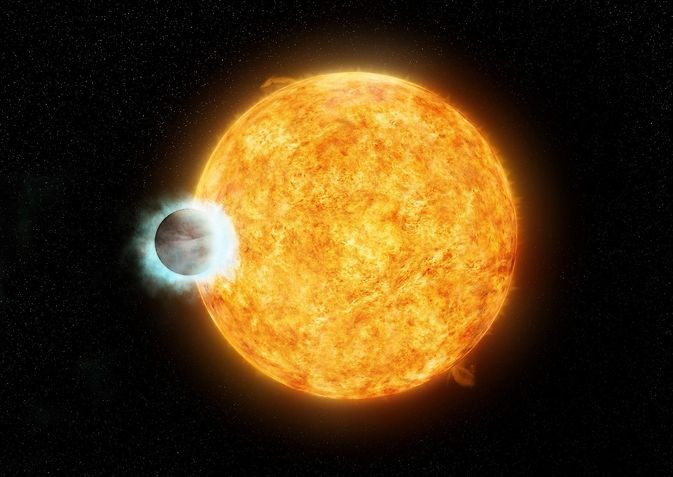NASA’s Chandra Observatory Discovers Planet That Makes Its Host Star Act Older Than Its Age

Scientists have used data provided by NASA’s Chandra X-ray Observatory to find a planet that causes the star it orbits to act much older than it actually is, according to a new study. The discovery is expected to help astronomers better understand how a massive planet can influence the behavior of its parent star.
The planet, dubbed WASP-18b, has a mass about 10 times that of Jupiter and completes one orbit around its star WASP-18 in less than 23 hours, which places the planet in the “hot Jupiter” category of exoplanets, or planets that are located outside our solar system. According to scientists, WASP-18b is the first known example of an orbiting planet that has apparently made its star, which is about the mass of the sun, to display characteristics of an older star.
“WASP-18b is an extreme exoplanet," Ignazio Pillitteri of the Istituto Nazionale di Astrofisica, or INAF, in Italy, and the study’s lead author, said in a statement. “It is one of the most massive hot Jupiters known and one of the closest to its host star, and these characteristics lead to unexpected behavior. This planet is causing its host star to act old before its time.”
According to scientists, WASP-18 is between 500 million to 2 billion years old, which is considered young by astronomical standards. By comparison, the sun is about 5 billion years old and thought to be about halfway through its lifetime.
While young stars tend to be more active -- exhibiting stronger magnetic fields, larger flares and more intense X-ray emissions than older stars -- astronomers did not detect any X-rays when examining WASP-18. Scientists used data about the magnetic activity and X-ray emissions of stars to determine that WASP-18 is about 100 times less active than it should be at this stage in its life cycle.
The researchers believe that tidal forces created by the gravitational pull of the giant planet may have interrupted the magnetic field of the star. The strength of the magnetic field, in turn, depends on the amount of convection, which denotes how intensely hot gas stirs inside the star.
“The planet’s gravity may cause motions of gas in the interior of the star that weaken the convection,” Salvatore Sciortino of INAF and the study’s co-author, said in the statement. “This has a domino effect that results in the magnetic field becoming weaker and the star to age prematurely.”
© Copyright IBTimes 2024. All rights reserved.






















